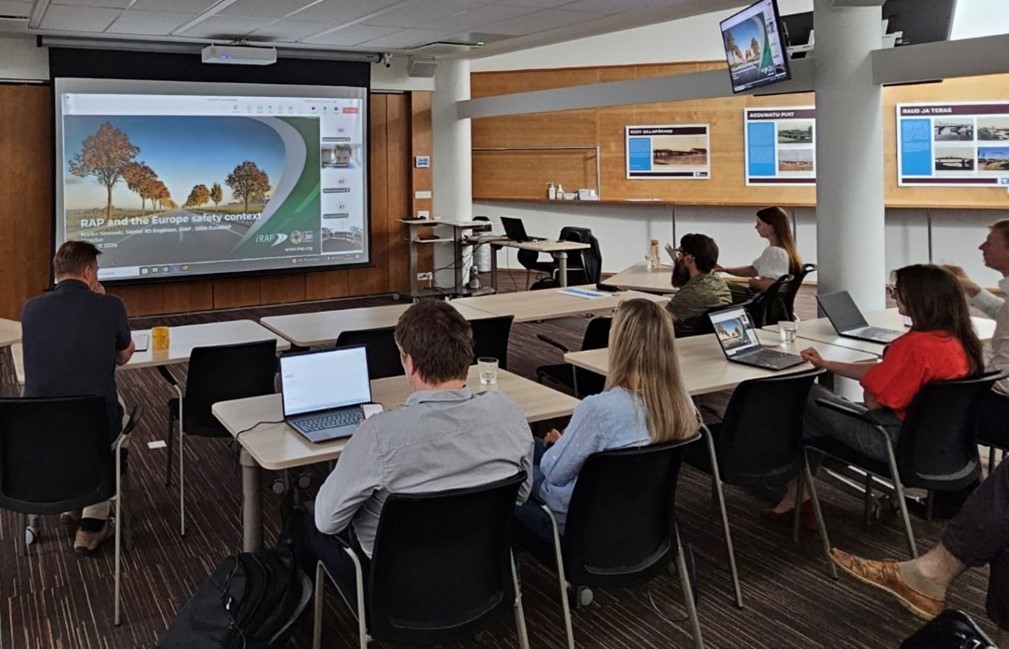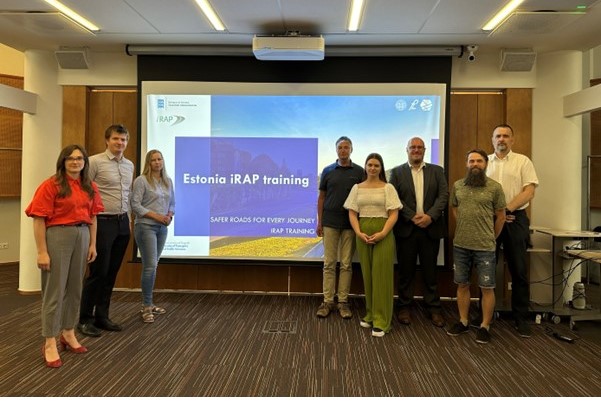A one-day iRAP training course was conducted in Tallinn in May for Estonian and Latvian Road Authorities helping to build capacity in the countries, and Baltics region, for safer roads.
The results of Estonia’s first Star Rating pilot project were shared, providing insight on the level of safety ‘built in’ to 90km of national roads for vehicle occupants, pedestrians, motorcyclists and bicyclists.
Infrastructure safety is a focus of Estonia’s National Traffic Safety Programme 2016-2025, with commitments for safety impact assessments and audits on the TEN-T network and the treatment of high-risk sites.
Local authorities are interested to explore how the iRAP methodology and tools can extend beyond the RISM Directive and TEN-T network to assess and inform safety improvements to rural roads, where most fatal crashes occur.
The training was hosted by Republic of Estonia Transport Administration (Traffic Safety Department), conducted by iRAP experts from the Faculty of Transport and Traffic Sciences (FPZ), and supported by Marko Ševrović from European Institute of Road Assessment (EIRA) and Olivera Rozi, iRAP’s Safer Journeys Lead for Europe. During the course of the training, 11 participants attended in-person and 17 participants joined online.
Estonia’s National Audit Office has recently called for greater investment to meet national road safety targets and to address road fatalities in the country, which have not decreased in the last three years. Safer road infrastructure will be key to the solution.
For more safety insights on the human and economic impact of road crashes, how safe Estonia and Latvia’s roads are, and the Business Case for Safer Roads, click here.

Images credit: Andelo Marunica, FPZ


















